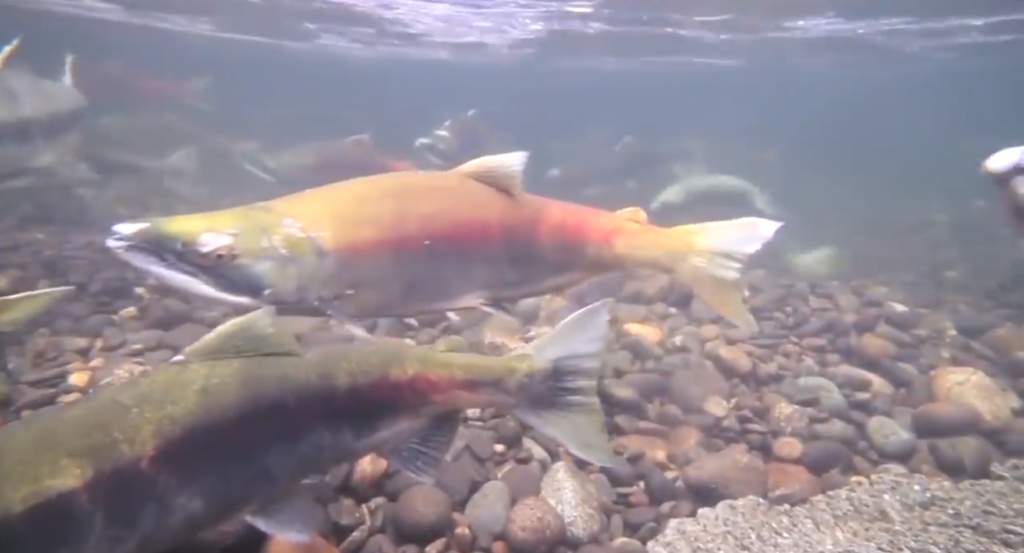
Just below the surface of many of the streams and creeks on Vancouver Island, coho are making their annual return.
These salmon break the surface of Colquitz Creek as they spawn their way up the waterway, but many don’t make it this far.
Up to 40 per cent in some streams are mysteriously killed and, according to new research, the culprit is hidden in plain sight.
It’s a chemical that’s used to prevent the rubber in tires from cracking. Over time, the tires shed dust containing the chemical, and it makes its way into urban streams when it rains. Then, it attacks the neurological systems of the coho.
Dr. Joachim Carolsfeld is the executive director of the World Fisheries Trust. He said the study is a breakthrough in the survival of west coast coho salmon.
“This is a great step forward in terms of being able to really pin down this question. and it’s a wonderful detective story,” said Carolsfeld.
The lead researcher of the study, Dr. Zhenyu Tian from the University of Washington, said the long-term solution is changing the chemical composition of tires, but an easy fix is filtering water from roadways before it reaches streams and creeks with rain gardens or gravel beds.
“If we can identify and prioritize some of those key locations. We can put of these treatment systems there. In the short-term, this will help the coho population to at least survive for a longer time,” said Dr. Tian.
These mounds of dirt separate the Trans-Canada highway from Colquitz, acting as an effective filtration system, saving coho in the future from the toxins.
Dr. Carolsfeld, Executive Director of the World Fisheries Trust, said the mortality rate of local coho is likely due to the toxins coming from commuters’ tires.
“We had a mystery mortality at the fish fence at Colquitz a couple of years ago. Then last year there were dead fish at the Craigflower counting fence. Again, without any real indicator as to why they died. My guess is that both of those would have come from this,” he said.
Carolsfeld hopes that the urban salmon returning will be safer, with a few simple solutions will go a long way to secure their futures.
WATCH MORE: B.C. salmon stocks to benefit from five year, $140-million fund




